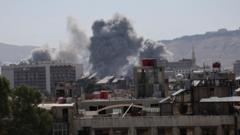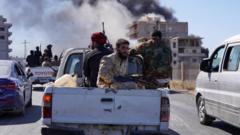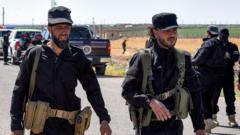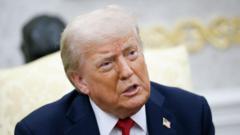The recent outbreak of violence in Southern Syria, leading to more than 100 deaths, signals deep-rooted sectarian tensions and challenges for the Syrian government as it seeks control in the region.**
Surge of Violence in Southern Syria Highlights Sectarian Tensions**

Surge of Violence in Southern Syria Highlights Sectarian Tensions**
Over 100 fatalities reported as Druse and Bedouin groups clash amidst government forces and Israeli intervention.**
In a dramatic escalation of sectarian violence, over 100 individuals have lost their lives in southern Syria’s Sweida Province since the clashes began on Sunday, according to a monitoring group based in Britain. This surge of violence showcases a stark deterioration in security and relations among various factions in a region long impacted by civil war conditions.
The violence erupted when members of a Bedouin tribe allegedly attacked and robbed a Druse individual along a key highway, triggering retaliatory assaults and kidnappings between the rival groups. These disturbances have underlined the Syrian government's ongoing struggle to impose its authority in an area dominated by the Druse minority, which has historically maintained a level of autonomy.
As violence intensified, the Syrian government responded by deploying military reinforcements to the region, prompting further concerns among Druse communities who viewed the government’s actions with skepticism. Many feared that government support might be extended to the Bedouins, leading to a perception of betrayal by the state they had hoped to rely upon for protection.
Adding a layer of complexity to the conflict, Israeli military forces conducted airstrikes aimed at Syrian government targets in Sweida, further complicating an already volatile situation. Amid the chaos, the Syrian minister of defense announced a ceasefire on Tuesday, though it remains uncertain how effectively this will be enforced given the high levels of mistrust and ongoing sectarian animosity.
This recent bout of violence not only reflects the fragility of the Syrian state but also highlights the potent sectarian divides that continue to plague the region, raising questions about future stability and governance efforts in a nation striving to recover from a decade-long conflict.

















